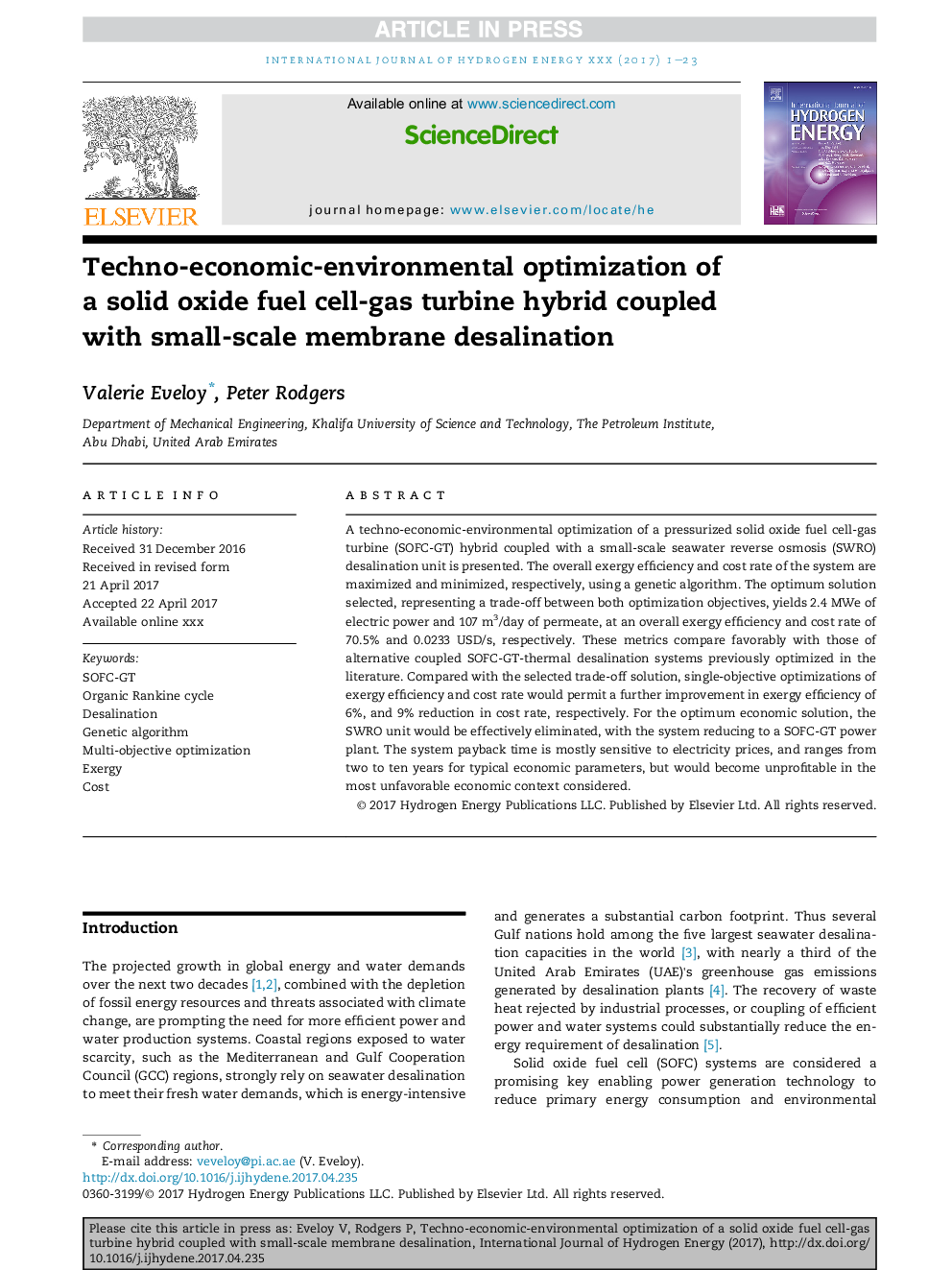| Article ID | Journal | Published Year | Pages | File Type |
|---|---|---|---|---|
| 5146469 | International Journal of Hydrogen Energy | 2017 | 23 Pages |
Abstract
A techno-economic-environmental optimization of a pressurized solid oxide fuel cell-gas turbine (SOFC-GT) hybrid coupled with a small-scale seawater reverse osmosis (SWRO) desalination unit is presented. The overall exergy efficiency and cost rate of the system are maximized and minimized, respectively, using a genetic algorithm. The optimum solution selected, representing a trade-off between both optimization objectives, yields 2.4Â MWe of electric power and 107Â m3/day of permeate, at an overall exergy efficiency and cost rate of 70.5% and 0.0233 USD/s, respectively. These metrics compare favorably with those of alternative coupled SOFC-GT-thermal desalination systems previously optimized in the literature. Compared with the selected trade-off solution, single-objective optimizations of exergy efficiency and cost rate would permit a further improvement in exergy efficiency of 6%, and 9% reduction in cost rate, respectively. For the optimum economic solution, the SWRO unit would be effectively eliminated, with the system reducing to a SOFC-GT power plant. The system payback time is mostly sensitive to electricity prices, and ranges from two to ten years for typical economic parameters, but would become unprofitable in the most unfavorable economic context considered.
Related Topics
Physical Sciences and Engineering
Chemistry
Electrochemistry
Authors
Valerie Eveloy, Peter Rodgers,
